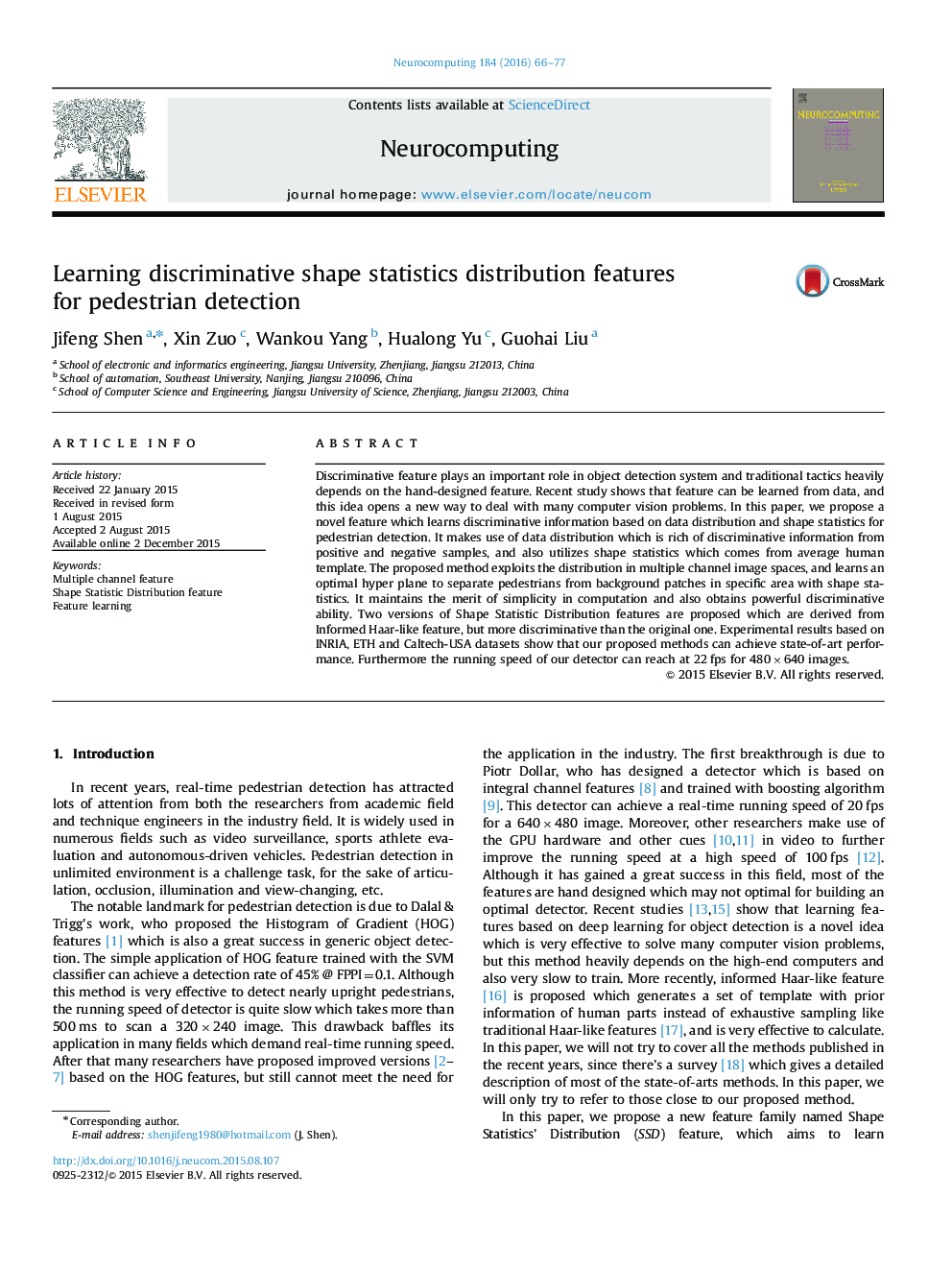| کد مقاله | کد نشریه | سال انتشار | مقاله انگلیسی | نسخه تمام متن |
|---|---|---|---|---|
| 405942 | 678050 | 2016 | 12 صفحه PDF | دانلود رایگان |
Discriminative feature plays an important role in object detection system and traditional tactics heavily depends on the hand-designed feature. Recent study shows that feature can be learned from data, and this idea opens a new way to deal with many computer vision problems. In this paper, we propose a novel feature which learns discriminative information based on data distribution and shape statistics for pedestrian detection. It makes use of data distribution which is rich of discriminative information from positive and negative samples, and also utilizes shape statistics which comes from average human template. The proposed method exploits the distribution in multiple channel image spaces, and learns an optimal hyper plane to separate pedestrians from background patches in specific area with shape statistics. It maintains the merit of simplicity in computation and also obtains powerful discriminative ability. Two versions of Shape Statistic Distribution features are proposed which are derived from Informed Haar-like feature, but more discriminative than the original one. Experimental results based on INRIA, ETH and Caltech-USA datasets show that our proposed methods can achieve state-of-art performance. Furthermore the running speed of our detector can reach at 22 fps for 480×640 images.
Journal: Neurocomputing - Volume 184, 5 April 2016, Pages 66–77
